Messaging Matrix: How to Keep Brand Messaging Aligned (Template)
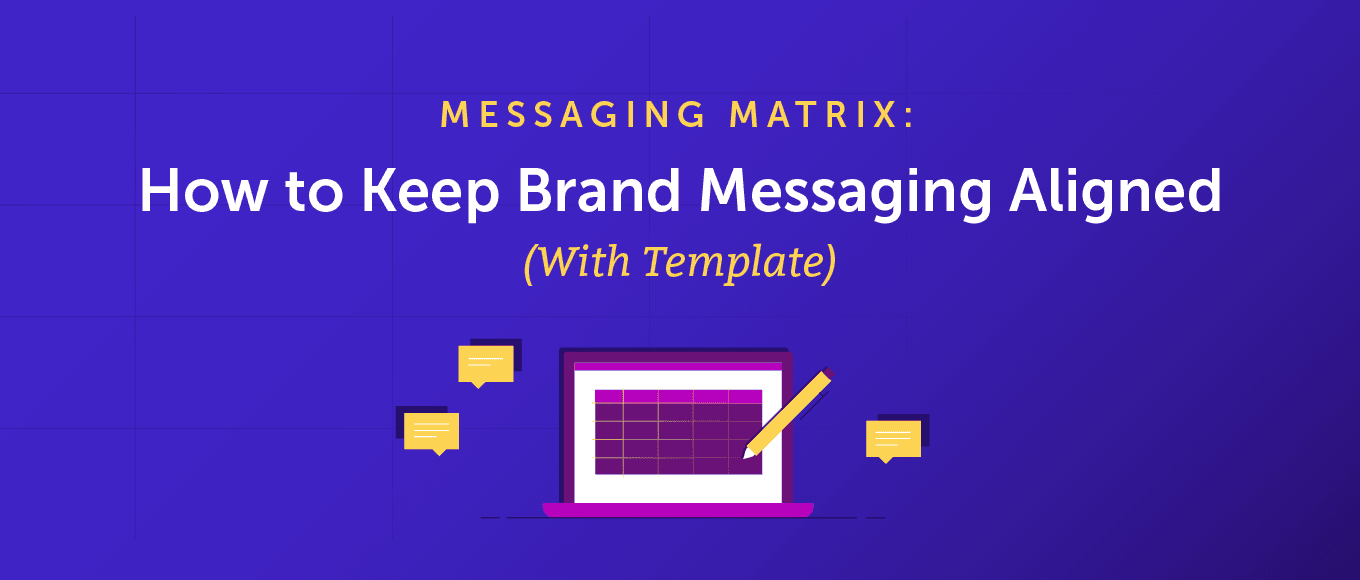 Have you ever listened to two very different people describe the same story, like a book or movie? They probably gave you wildly different answers based on their own preferences and experiences, right?
That’s why honing your brand’s messaging strategy is important.
Because if your whole team isn’t aligned around your messaging, the same thing happens as when two different people describe the same movie. Everyone asked about the product gives a different answer.
This is especially important for businesses that have already started growing their marketing team and scaling their marketing and content strategies.
As you grow the marketing team, the sales team, and the other teams communicating with your business’s audiences, you’re adding more people that are sharing your brand’s core message on a daily basis.
And if you don’t have an overall messaging strategy aligning all those people, the message ends up being subject to their own translation.
Plus, think of all the other things you document as you grow your marketing team.
You’ve probably documented your overall marketing strategy, your content strategy, your social media strategy, your customer journey, your brand voice, and more.
But all of those things require messages. So it's time to document a messaging strategy to align it all.
A messaging matrix is how you do that.
Have you ever listened to two very different people describe the same story, like a book or movie? They probably gave you wildly different answers based on their own preferences and experiences, right?
That’s why honing your brand’s messaging strategy is important.
Because if your whole team isn’t aligned around your messaging, the same thing happens as when two different people describe the same movie. Everyone asked about the product gives a different answer.
This is especially important for businesses that have already started growing their marketing team and scaling their marketing and content strategies.
As you grow the marketing team, the sales team, and the other teams communicating with your business’s audiences, you’re adding more people that are sharing your brand’s core message on a daily basis.
And if you don’t have an overall messaging strategy aligning all those people, the message ends up being subject to their own translation.
Plus, think of all the other things you document as you grow your marketing team.
You’ve probably documented your overall marketing strategy, your content strategy, your social media strategy, your customer journey, your brand voice, and more.
But all of those things require messages. So it's time to document a messaging strategy to align it all.
A messaging matrix is how you do that.
Messaging Matrix: How to Keep Brand Messaging Aligned (Template) by @thatbberg via @CoSchedule
Click To TweetDownload Your Easy-to-Use Messaging Matrix Template
Keeping messaging aligned with your key personas is super easy with this template. Follow the advice in this post, then use this downloadable resource to put it into action:What is a Messaging Matrix?
A messaging matrix is a simple chart that summarizes and systemizes your brand’s positioning and messaging so your content can better align with your core value proposition, no matter what.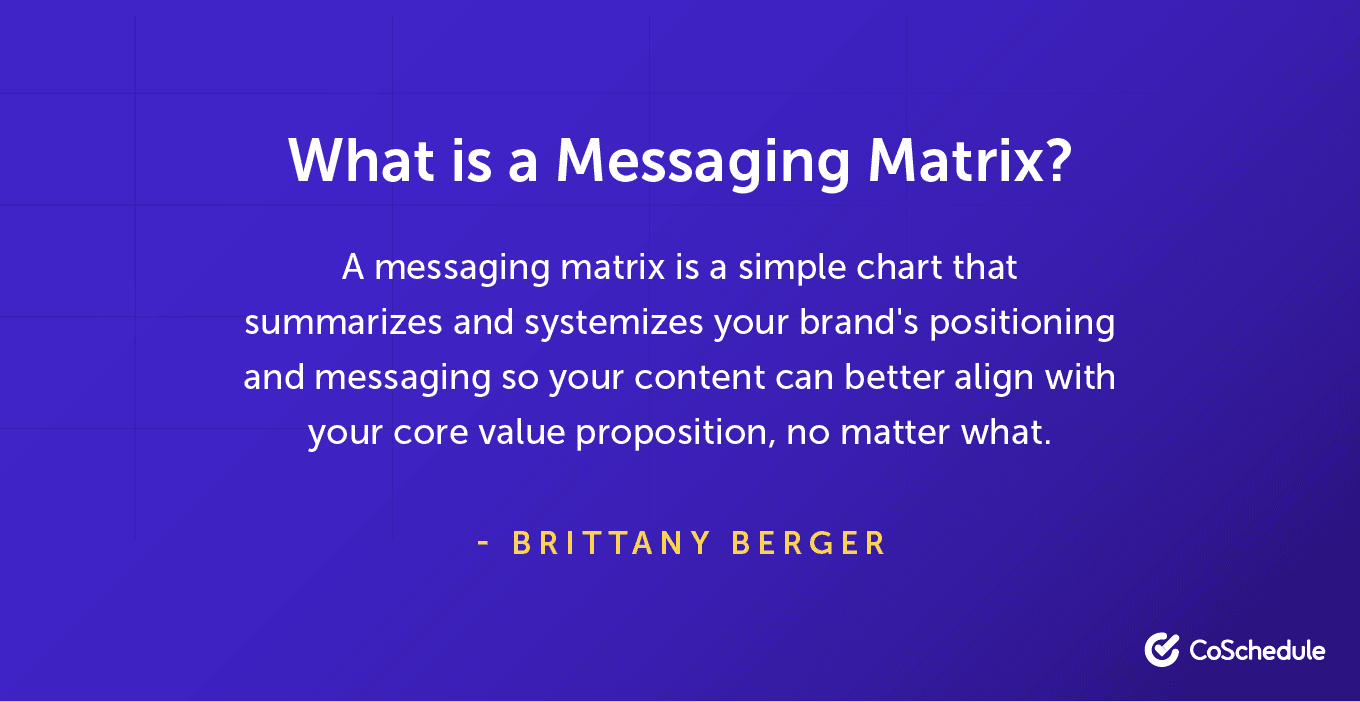 It’s involved in methodologies like Six Sigma, but isn’t as commonly found in the agile and more modern companies you might work at (although you’re about to change that).
It’s involved in methodologies like Six Sigma, but isn’t as commonly found in the agile and more modern companies you might work at (although you’re about to change that).
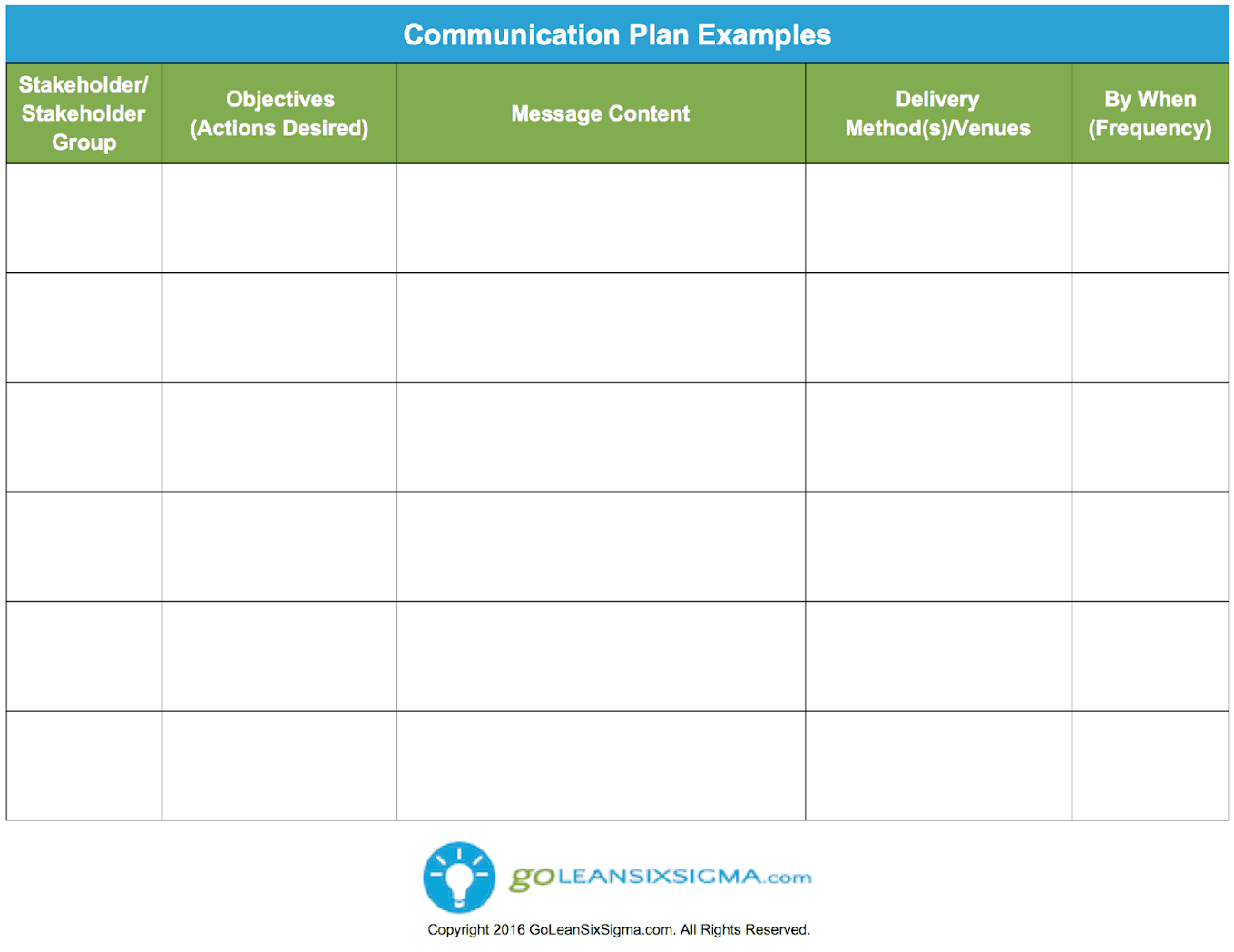 Source: GoLeanSixSigma.com
Think of it like a bridge between your buyer personas and your content strategy.
In one chart or document, it summarizes your brand’s unique value proposition, what makes you unique from competitors, and how that value should be communicated to different segments of your audience in different situations.
It clearly communicates things like:
Source: GoLeanSixSigma.com
Think of it like a bridge between your buyer personas and your content strategy.
In one chart or document, it summarizes your brand’s unique value proposition, what makes you unique from competitors, and how that value should be communicated to different segments of your audience in different situations.
It clearly communicates things like:
- The brand’s overall positioning or core values
- The main customer profiles you’re targeting
- Which parts of your positioning those personas care most about
- How you can cater your message accordingly
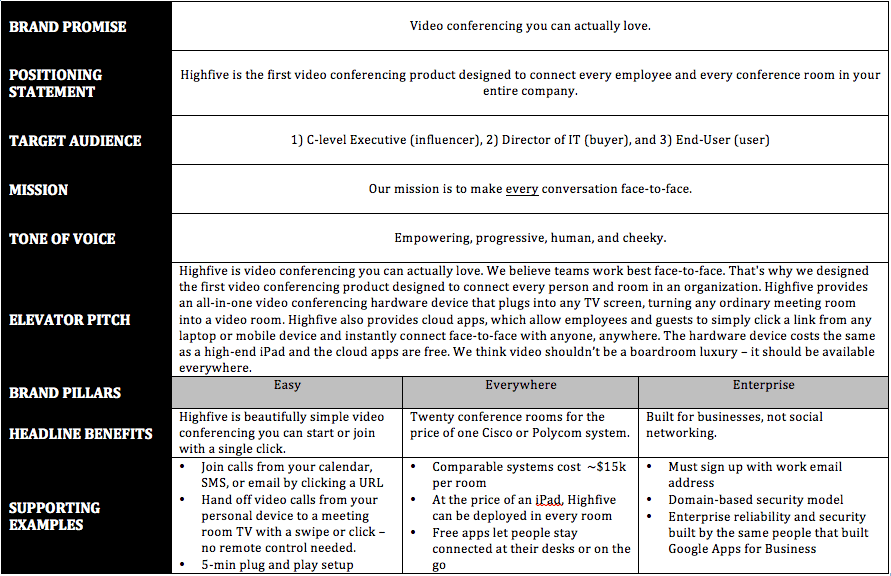 Image Source: Pardot
With all the information and context mapped out in advance for your brand’s most important messages, your whole company has an easy map to turn to when they need to create content or copy.
Obviously, this is a great time and difficulty saver for marketers who previously figured this out individually for every landing page, blog post, or email. But it’s even more helpful when you think about how it can work outside of the marketing team.
Ever have someone in sales or product ask for your feedback on some writing “real quick,” to make sure it resonated alright? By making your messaging matrix and sample messages available company-wide, you can make your team’s expertise available in quick reference form.
Image Source: Pardot
With all the information and context mapped out in advance for your brand’s most important messages, your whole company has an easy map to turn to when they need to create content or copy.
Obviously, this is a great time and difficulty saver for marketers who previously figured this out individually for every landing page, blog post, or email. But it’s even more helpful when you think about how it can work outside of the marketing team.
Ever have someone in sales or product ask for your feedback on some writing “real quick,” to make sure it resonated alright? By making your messaging matrix and sample messages available company-wide, you can make your team’s expertise available in quick reference form.
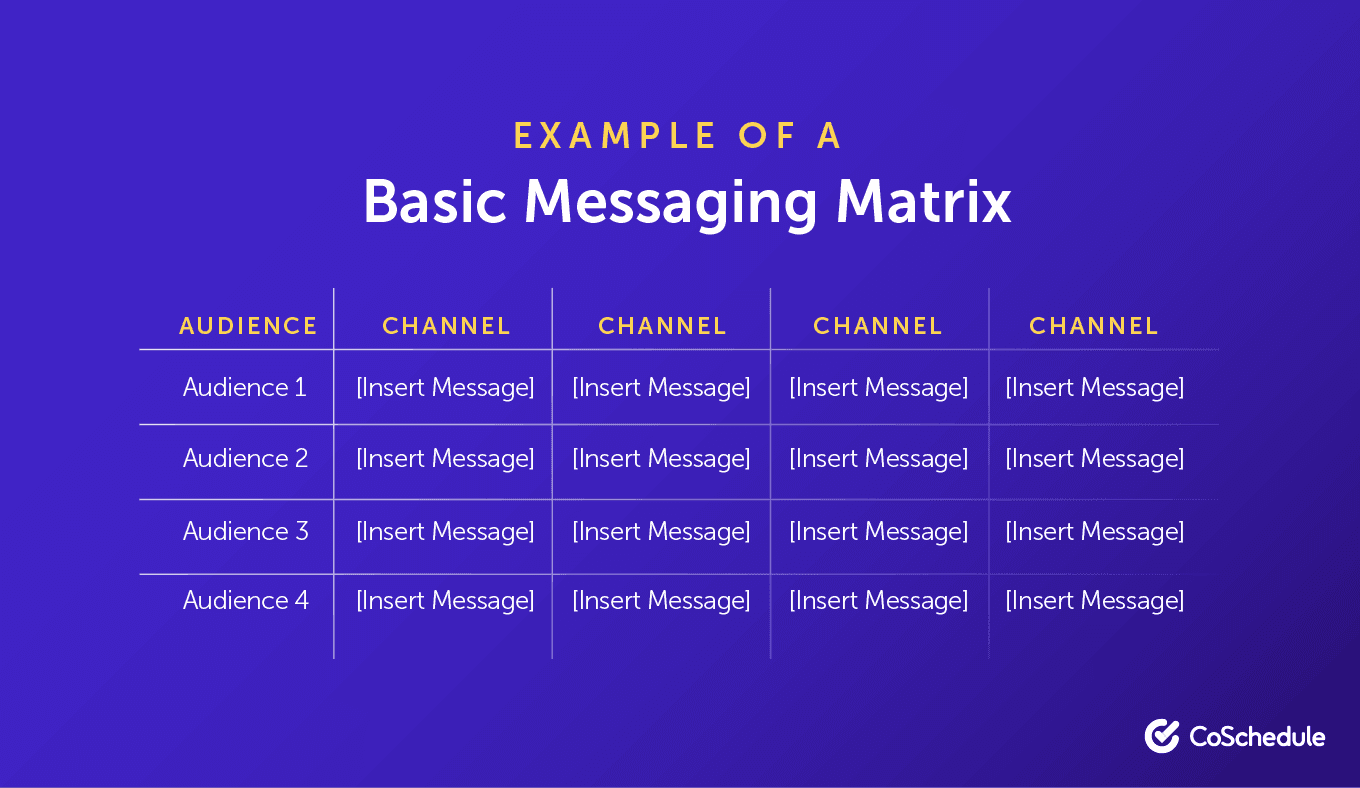
Why a Messaging Matrix is Crucial for Marketing Teams
So why is a messaging matrix so important for marketing teams in fast-growing businesses? Can’t you just trust that everyone else you work with will “know the brand” and figure out the right messages to include for the content they’re working on? In theory. But once you’ve been a marketer for long enough, you know that marketing theory and marketing practice are two very different things. So putting together your messaging matrix will:Ensure Strategic Messaging
Don’t assume everyone on your team already knows the brand’s core messaging and positioning perfectly. Especially if you’re working with an agency, consultants, or freelancers, you need to ensure everyone has the same, and the most up-to-date, information about how to communicate with customers most effectively. This goes beyond the ability to write good copy, to the core of understanding what customers need to hear in a given moment.Create Consistency Across Teams
As more functions of our businesses come online, more teams outside of marketing need marketing’s help with content and copy. The sales team needs help with copy for their sales decks. The support team could use your advice for the knowledge base. Product, HR, the list goes on… To paraphrase Nora Ephron, “everything is content.” And having a messaging matrix available to your whole company makes it easy for everyone to create their own content. This trains other teams how to do so and can help make them better collaborators when you do work with them.Make Copywriting Easier
Writing words is easy. Writing informational words is more difficult. Writing informational words that persuade someone, taps into their emotion, and moves them to take an action that moves them further into the customer journey is hard. So why make your team do it more than once? Creating really compelling, persuasive content requires that you figure this messaging out. And if you don’t document it and save it for later, you have to figure it out every time you start a new project. But with a messaging matrix with specific pain points, features, and results laid out with messaging to accompany them, you’re not starting from scratch as often. When it’s time to write a new landing page targeted at a certain customer, you have pieces of messaging ready that you already know will resonate.Aligns the Whole Customer Journey
Finally, a messaging matrix can create alignment throughout the different stages of the customer journey. With content supporting more and more of that journey, it’s important that you can provide that consistent messaging and experience, whether someone’s reading a social media post targeted at the top of the marketing funnel or talking to a sales rep on a demo. And when everyone’s working from the same guidelines and starting point when writing copy, that happens way more often and easily.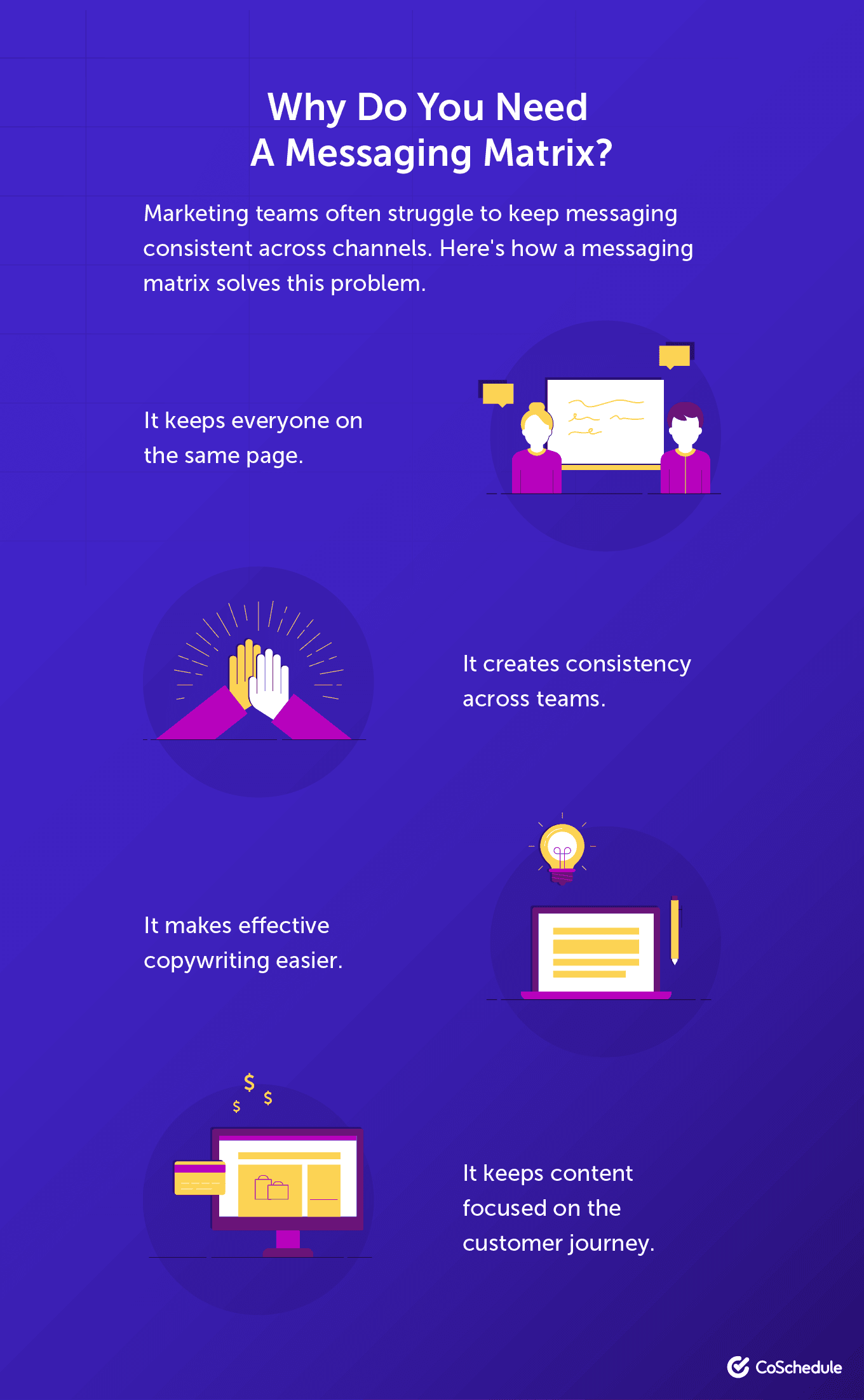
How to Create Your Brand's Messaging Matrix
So, you’re ready to create a messaging matrix and get your content better aligned with your brand’s most persuasive positioning. How can you actually get started? Here’s a brief overview:Step 1: Gather Customer Experience Stakeholders
First, you need to get the right people in the same room. A messaging matrix needs to be data- and experience- informed based on real prospects and customers. This means people from departments like marketing, sales, and support all need to come together. And I don’t just mean the department heads either. While you managers might take the lead on strategy, your team members are the ones that talk to and communicate with your audience most. They’re going to have crucial insights for you.Step 2: Identify Your Brand’s Core Value Proposition
Once you’ve brought together the team members with the most insight into and data about your customers, it’s time to identify the core value proposition, or what CoSchedule likes to call your content core:“Your content core connects the dots between what your customers care about and what you have to offer them.”
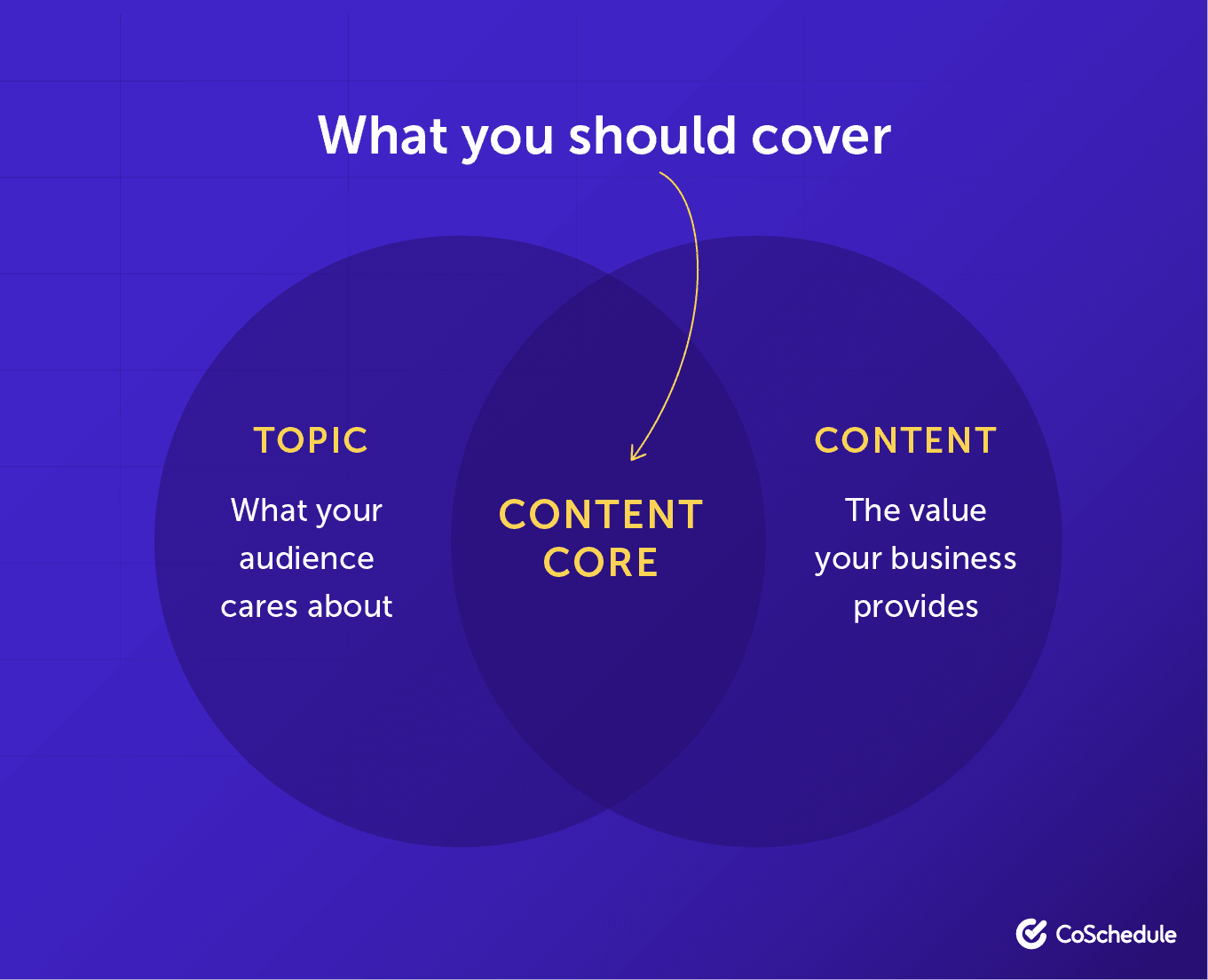 Your value proposition isn’t just a description of your company’s product, or service, or mission. It brings your offering and mission together in a way that succinctly gets across which problem of your customers’ it solves and why they need it solved now.
It’s your brand’s ultimate answer to “why should the world care?”
Your value proposition isn’t just a description of your company’s product, or service, or mission. It brings your offering and mission together in a way that succinctly gets across which problem of your customers’ it solves and why they need it solved now.
It’s your brand’s ultimate answer to “why should the world care?”
Your core value proposition is your brand's ultimate answer to why should the world care?
Click To TweetStep 3: Break Down Your Key Customer Personas
You’re almost ready to start filling out your messaging matrix, but there’s one more thing to do before you start: refine and refresh your buyer personas. Think about how you talk at a family reunion: your tone and topics change depending on whether you’re hanging out with the kids of the family, the younger adults, or the elder generation. Even the same story, you’d tell a slightly different way. That’s why this step is so important. You may have perfected your general value proposition, but how you convey and communicate that will depend on who you’re talking to. That means figuring out who you’re talking to, and understanding them on a deep level. And once everyone in the room is reminded of this, you can start filling out the matrix with your personas as the vertical axis, and components of your positioning across the horizontal one.Step 4: Fill Out Your Messaging Matrix
Finally, it’s time to start filling in the matrix. You have all the information you need, you just need to frame it. This means taking the important parts of your value proposition and messaging and “translating” it to how each of your core customer personas would want to hear it. If your general value proposition answers, “why would the world care?” the language you come up with in this step answers, “why would this specific person care?” Inside the matrix, you’ll write information like:- A version of your value proposition targeted to that specific persona, thinking about what first impressions you’d want them to have, what would hook them in, and more.
- Which product or service, or features of your product or service, they would be most interested in and why, including which benefits and results those features bring.
- What kind of facts and social proof will be most persuasive and appealing to them.
Step 5: Use and Review It Regularly
Finally, the last step is to make sure you, and everyone else who needs to, actually uses the information in the messaging matrix. Documentation is only helpful when people actually reference it, which might take some behavior and habit change.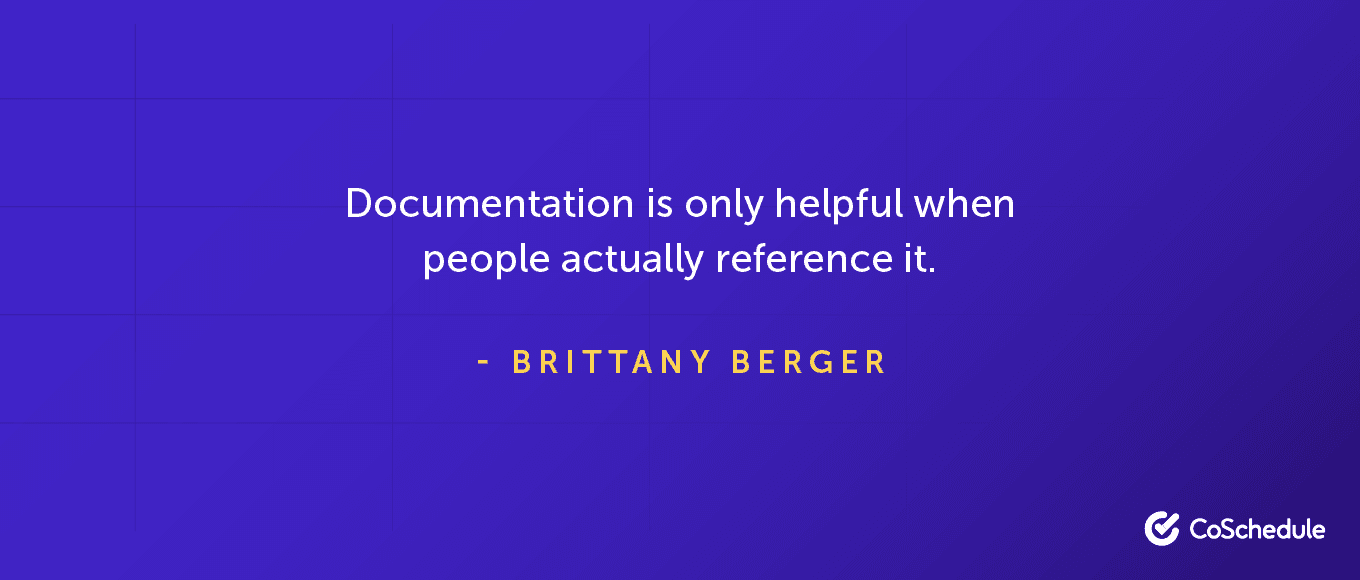 Make sure the matrix is easily available to anyone who needs it, and that it’s always up to date. This likely means uploading it to your shared file drive or company wiki, along with making a quarterly recurring meeting with your stakeholders to review and update it.
Make sure the matrix is easily available to anyone who needs it, and that it’s always up to date. This likely means uploading it to your shared file drive or company wiki, along with making a quarterly recurring meeting with your stakeholders to review and update it.


